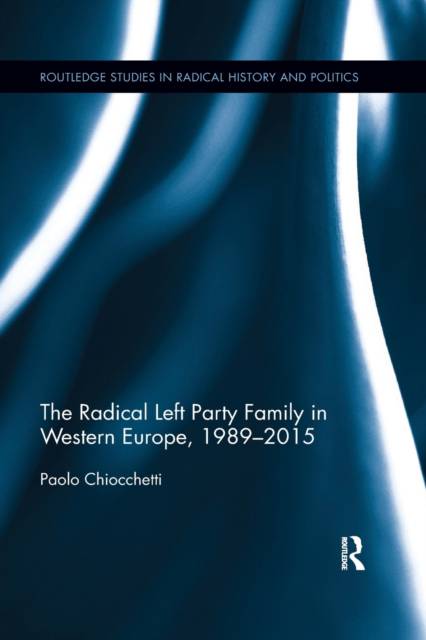
- Afhalen na 1 uur in een winkel met voorraad
- Gratis thuislevering in België vanaf € 30
- Ruim aanbod met 7 miljoen producten
- Afhalen na 1 uur in een winkel met voorraad
- Gratis thuislevering in België vanaf € 30
- Ruim aanbod met 7 miljoen producten
The Radical Left Party Family in Western Europe, 1989-2015
Paolo ChiocchettiOmschrijving
This book provides an innovative analysis and interpretation of the overall trajectory of the Western European radical left from 1989 to 2015. After the collapse of really existing communism, this party family renewed itself and embarked on a recovery path, seeking to fill the vacuum of representation of disaffected working-class and welfarist constituencies created by the progressive neoliberalisation of European societies. The radical left thus emerged as a significant factor of contemporary political life but, despite some electoral gains and a few recent breakthroughs (SYRIZA in Greece, PODEMOS in Spain), it altogether failed to embody a credible alternative to neoliberalism and to pave the way for a turn to a different developmental model.
This book investigates why this was the case, combining aggregate (17 countries), case study (Germany, Italy, and France), and comparative methods. It accurately charts the evolution of the nature, strength, cohesion, and influence of the Western European radical left, offering new insights in explaining its behaviour, success, and limits. It is essential reading for scholars, students, and activists interested in the radical left and in contemporary European politics.
Specificaties
Betrokkenen
- Auteur(s):
- Uitgeverij:
Inhoud
- Aantal bladzijden:
- 244
- Taal:
- Engels
- Reeks:
Eigenschappen
- Productcode (EAN):
- 9780367595968
- Verschijningsdatum:
- 14/08/2020
- Uitvoering:
- Paperback
- Formaat:
- Trade paperback (VS)
- Afmetingen:
- 156 mm x 234 mm
- Gewicht:
- 362 g

Alleen bij Standaard Boekhandel
Beoordelingen
We publiceren alleen reviews die voldoen aan de voorwaarden voor reviews. Bekijk onze voorwaarden voor reviews.











